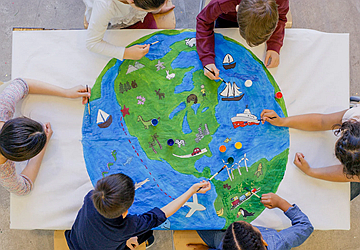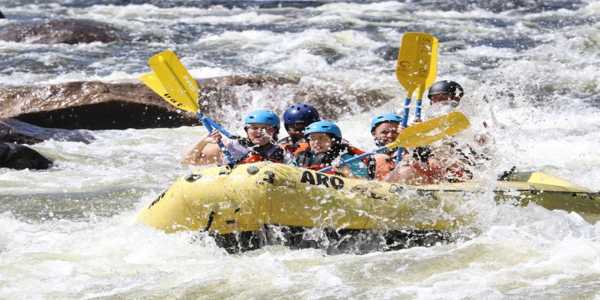What You Need To Know Before Trying Whitewater Rafting
Whitewater rafting is not just an adventure; it's an adrenaline-pumping experience that has the potential to transform the way you look at outdoor recreation. Have you ever wondered what navigating through choppy, unpredictable waters feels like, pushing yourself and your team to work together? If you're considering diving into this exhilarating activity, you should know a few things before grabbing your paddle and heading for the rapids.
What Whitewater Rafting Involves
Whitewater rafting isn't just about paddling down a river but tackling the rush of wild, untamed waters with your raft and team. The rivers that offer whitewater experiences are graded based on difficulty, ranging from Class I (easy) to Class VI (extremely difficult and dangerous). Before you even think about jumping into a raft, it's essential to understand what these classifications mean. Most beginners should start with Class II or III rapids, which offer plenty of excitement without being overwhelmingly complex.
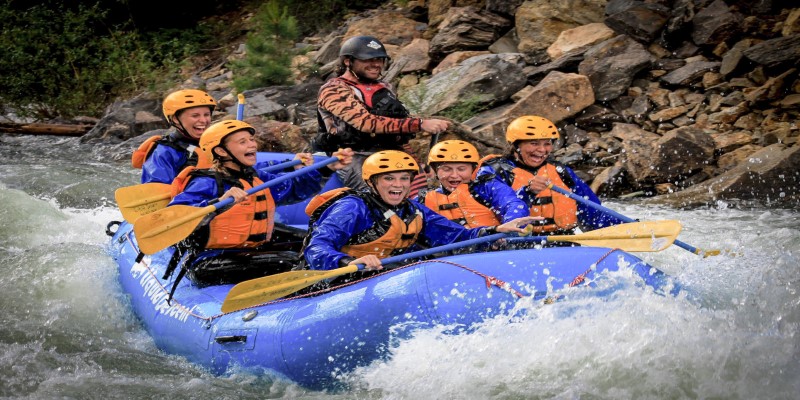
Class I
Easy, with small waves and no obstacles. Perfect for beginners looking for a calm introduction to rafting.
Class II
It is easy, with small waves and minor obstacles. You'll likely encounter mild, manageable rapids requiring some paddling skill.
Class III
Moderate difficulty, with medium-sized waves and occasional obstacles. These rapids offer a bit more thrill, but with the proper guidance, they're still manageable for beginners.
Class IV
It is challenging, with large waves and significant obstacles. This is for experienced rafters who know how to handle fast-moving water.
Class V
It is challenging, with powerful rapids, big drops, and dangerous obstacles. Only the most skilled rafters should attempt these.
Class VI
It is nearly impossible, with extreme difficulty and a high risk of injury. These rapids are best left to the professionals—or avoided altogether!
Make sure you choose the right level based on your experience and comfort.
Gear Up Properly For Safety And Comfort
Before you get on the water, you'll need the right gear. Safety is paramount in whitewater rafting, and the right equipment can make a world of difference in both your comfort and your survival.
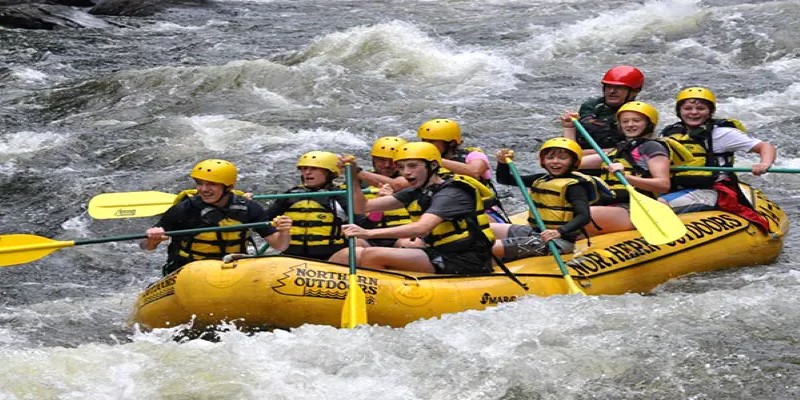
Helmet and PFD (Personal Flotation Device)
These are non-negotiable. Your rafting guide will likely provide you with these essentials, but it’s good to double-check that your helmet fits properly and your PFD is secure. A helmet will protect your head in case of falls, while a PFD will keep you afloat if you end up in the water.
Paddle
When you board the raft, you'll be given a paddle, but make sure it's the right size for your height and arm length. You'll be doing a lot of paddling, so a comfortable paddle will make the experience smoother.
Appropriate Clothing
While most rafting tours provide wetsuits, consider bringing water shoes, a swimsuit, and an extra layer if the weather is colder. Dress in a way that keeps you both comfortable and protected. Avoid cotton, as it gets heavy when wet. Synthetic or moisture-wicking materials are best.
Sun Protection
Remember the sun! Sunscreen, sunglasses with straps, and a hat are key when spending hours in the sun on the water. Even on cloudy days, UV rays can still be harmful.
Get Comfortable With Water And Balance
One of the biggest challenges for beginners is the water itself. It might seem daunting if you've never been on a fast-moving river, especially with the occasional dip into the water. However, whitewater rafting isn't just about paddling, balance, teamwork, and remaining calm under pressure. If you end up in the water, don't panic.
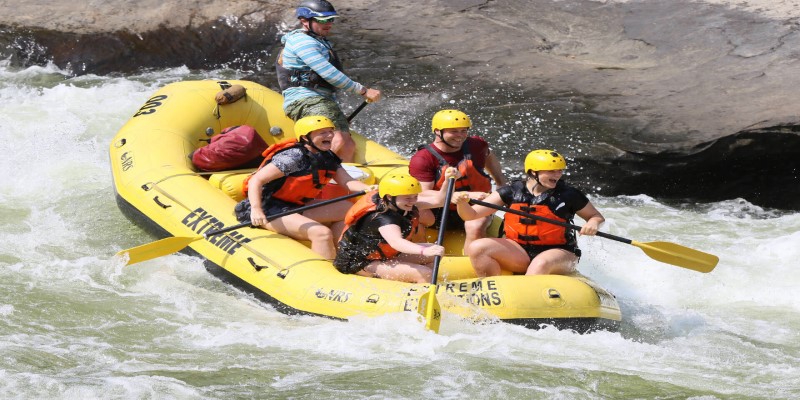
The Right Posture
Remember that you'll need to balance when you're on the raft. Sit upright with your knees bent and your feet firmly in the raft's bottom. This will give you a solid foundation for paddling and handling the rapids.
If You Fall In
If you do fall out of the raft, stay calm. Keep your feet pointed downstream and your head above water. Don't fight the current; let it carry you toward calmer water where your guide or teammate can help pull you back.
The ‘Throw Rope’ Technique
Rafting guides carry a throw rope if someone falls out of the raft. They practice grabbing and holding on to the rope to help them return to the raft.
Know How To Work As A Team
Rafting isn't a solo sport. It's all about teamwork. When you're out on the river, your success will depend on your ability to paddle in unison with your team. The guide may direct you with commands such as "forward," "backwards," or "stop," and you'll need to respond quickly and in sync. Rafting is a group activity, and every person's role is crucial to navigating the river successfully.
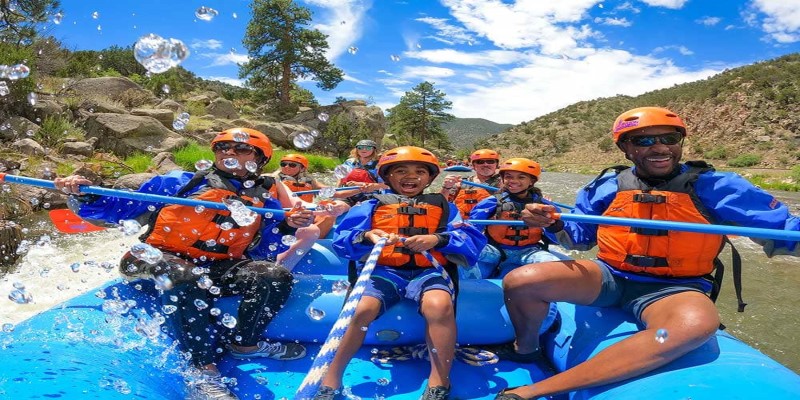
Communicate
While you may not always have the chance to talk over the rush of water, listening carefully to the guide and communicating any concerns is essential. If you're unsure what to do, don't hesitate to ask for clarification.
Stay In Sync
It may take some practice, but you must paddle harmoniously with your fellow rafters to avoid getting stuck or tipping over. It's one of those moments when the better you work together, the smoother your journey will be.
Respect The River And The Environment
Rafting is an incredible way to connect with nature, but it's also essential to protect it. Rivers can be fragile ecosystems, and improper behaviour or littering can have a lasting impact. Respect the environment by following your guide's instructions and adhering to any rules about waste disposal.
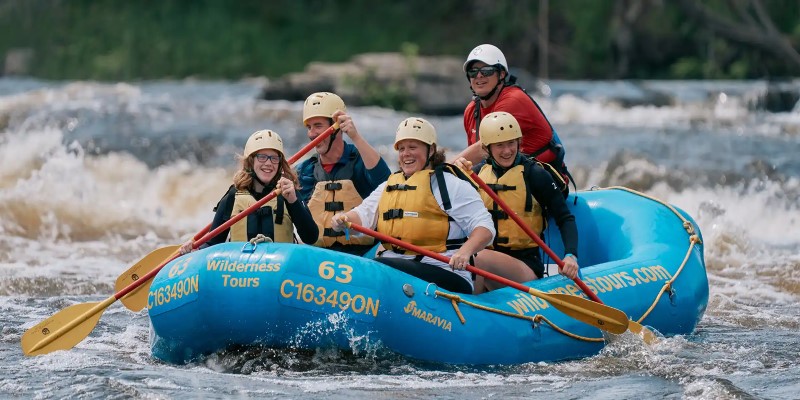
Leave No Trace
Most rafting companies encourage you to follow a "leave no trace" policy, which means you should pack out everything you bring with you. Dispose of trash properly, and be mindful of the natural beauty around you.
Wildlife
Keep your eyes peeled for wildlife. Depending on where you’re rafting, you may spot eagles, otters, or even bears along the riverbanks. Be sure to observe from a safe distance, and never approach wildlife.
Get Ready For The Ride Of A Lifetime
Whitewater rafting is an unforgettable experience that will challenge your physical abilities and test your limits. Whether you're seeking excitement, looking for a team-building activity, or just wanting to enjoy the beauty of nature from a new perspective, rafting is sure to provide a rush you won't forget.
Take the time to learn the ins and outs, prepare yourself physically and mentally, and respect the river. With the right attitude, gear, and knowledge, your first rafting trip could be the start of many more adrenaline-filled adventures. So, what are you waiting for? Grab your paddle, and let's hit the rapids!



